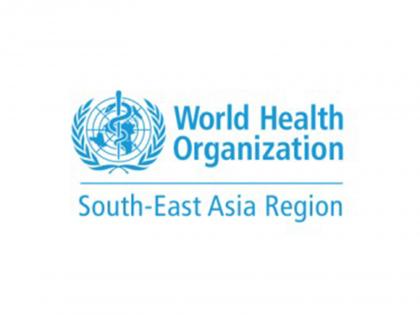Tobacco use falls fastest in South-East Asia, yet 322 million people still at risk: WHO
By ANI | Updated: October 8, 2025 20:20 IST2025-10-08T20:15:48+5:302025-10-08T20:20:08+5:30
New Delhi [India], October 8 : The WHO South-East Asia Region has made the fastest progress globally in reducing ...

Tobacco use falls fastest in South-East Asia, yet 322 million people still at risk: WHO
New Delhi [India], October 8 : The WHO South-East Asia Region has made the fastest progress globally in reducing tobacco use, according to the latest WHO Global Report on Trends in Prevalence of Tobacco Use 2000-2024 and Projections 2025-2030, the World Health Organization (WHO) said in an official statement on Wednesday.
The statement said that despite the progress, with more than 322 million adults and 8.6 million adolescents in the region still using tobacco, stronger policies, higher taxes, expanded cessation services, and regulation of new nicotine products are urgently needed to protect people's health.
"The progress is encouraging, but millions are still using tobacco and new nicotine products. We must accelerate actions to protect children and future generations," said Dr Catharina Boehme, Officer-in-Charge, WHO South-East Asia.
The statement further said that "countries of South-East Asia have shown what can be achieved with strong political commitment, comprehensive policies and community engagement," noting that the region already achieved the global target of a 30 per cent reduction in tobacco use by 2021four years ahead of schedule.
Once the global hotspot for tobacco consumption, the region in 2000 reported the world's highest tobacco use prevalence among men (70.1 per cent) and women (38 per cent). By 2024, prevalence had dropped to 37.4 per cent among men and 9.3 per cent among women, among the fastest declines ever recorded, the statement said.
Despite this progress, the WHO said the region remains home to a quarter of the world's tobacco users, including over 288 million smokeless tobacco users 80 per cent of the global total. In addition, there are an estimated 1.8 million adult and 500,000 adolescent electronic cigarette users in the region.
While the numbers for e-cigarettes are indicative, the WHO warned that the actual number may be much higher and present a growing health concern, especially among the youth.
"Tobacco use remains one of the leading preventable causes of disease, disability, and death in the region," said Dr Boehme, adding that "governments must continue to implement comprehensive tobacco control measures based on the evidence-based policies advocated by WHO FCTC (Framework Convention on Tobacco Control) and the MPOWER package."
The statement said that these measures include closing regulatory gaps and preventing children and adolescents from being initiated into nicotine use.
WHO has been working with Member States in the Region advocating for access to cessation services, raising taxes on all tobacco products, enforcing smoke-free policies, strengthening graphic health warnings, enforcing the TAPS (tobacco advertising, promotion, and sponsorship) ban, and regulating novel nicotine and tobacco products, the statement noted.
According to the WHO, these evidence-based interventions are critical to accelerating declines and protecting future generations from the devastating harms of tobacco.
Globally, tobacco use is projected to fall by 120 million users between 2010 and 2025, with the WHO South-East Asia Region accounting for more than half of this reduction69 million fewer tobacco users.
Three countriesBangladesh, India, and Nepalare on track to achieve at least a 30 per cent relative reduction by 2025, while six othersBhutan, DPR Korea, Maldives, Myanmar, Sri Lanka, and Thailandare projected to see smaller declines, the statement said.
Disclaimer: This post has been auto-published from an agency feed without any modifications to the text and has not been reviewed by an editor
Open in app